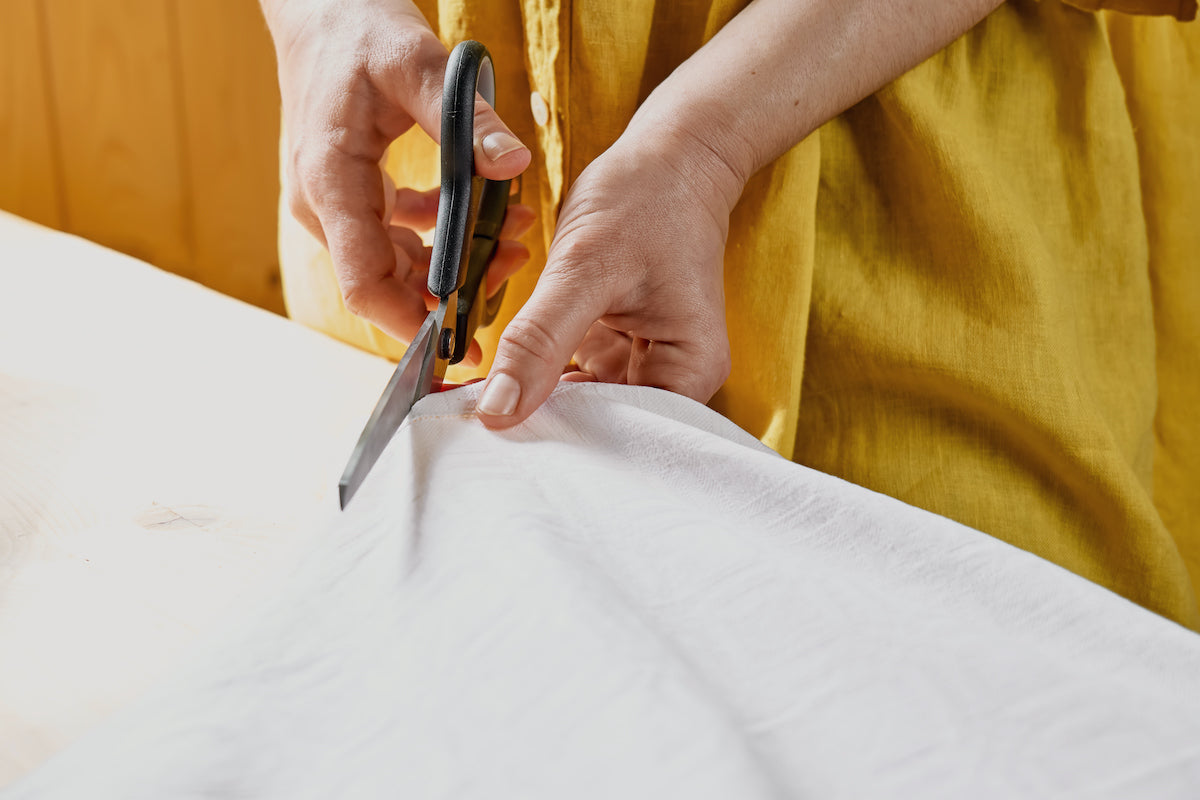According to Statista, retail sales of apparel and footwear globally hit $1.9 trillion USD in 2019, forecast to top $3 trillion by 2030. Behind these figures lie the tangled threads of excess production and waste, opaque supply chains, and mindless consumption that embody fast fashion.
Slow fashion is the opposite of – and a reaction to – fast fashion. It’s a philosophy that aims to evolve the textile and fashion design industries to be better for the planet and the people who grow, make and wear clothes.
You may have heard of the ‘slow food’ movement, and ‘slow fashion’ definitely shares the former’s appreciation of mindfulness, provenance and craft. The term originated with activist, professor and author Kate Fletcher. It means clothing that emphasises quality and ethics over cheap or convenient. Production cycles are slower and more localised, and there’s less focus on seasonal collections or fashion fads.
Slow fashion connects environmental sustainability with social and economic ethics, and gives us the choice to invest in well-made, timeless clothes that last. It’s a lens through which we can reset our relationship with clothes.
The hallmarks of slow fashion
Slower production schedules, small-batch collections, and zero-waste designs aim to reduce the textile waste clogging our landfills. Slow fashion brands often produce clothing in-house or locally, giving them greater control over quality and waste reduction. Supply chains, processes and labour conditions are more transparent, and often an intricate part of the brand’s story or purpose.
Materials and construction are key. Slow fashion designers will use durable fabrics that often also have sustainable benefits themselves: organic cotton, traceable merino, repurposed vintage textiles or recycled synthetics. Beware the latter though, as manmade fibres create other negative environmental impacts in their use and laundering.
7 ways to start going slow
Do some research
Find out how clothing brands’ practices and products align with values of quality, circularity and longevity. Take time to vet them to ensure you're investing your dollars wisely. Their website should have transparent details about their processes, as well as their philosophy. Ask them on social. (We’ve added a few conversation starters below.)
Understand the benefits
Remember: by embracing slow fashion, we can learn to buy more thoughtfully, while saving money, and building a better, more wearable wardrobe. Rather than slavishly following trends, slow fashion brands tend to help us create a timeless, trans-seasonal and capsule wardrobes, with classic, multi-use pieces and layers.
Take a breath
Hard to conquer the urge to impulse buy? Phone a friend before splurging on a new pair of shoes, or consult your current wardrobe before purchasing an item that won’t work with anything you own.
Buy less (but spend more)
By ‘spend more’, we mean potentially spend more money per garment, but also spend more time looking for each item. After all, when you kick the fast fashion habit, you’ll suddenly have more space in your wardrobe, and your weekend. And once you have a wardrobe you love, you’ll really want to take care of it.
Take a capsule (wardrobe)
This method of curating a wardrobe requires you to get real about which clothes make sense with your lifestyle. Only a select number of pieces can fit in a capsule wardrobe – an incentive to choose carefully. Each garment needs to earn its place in terms of quality, style and practicality.
Old is the new new
The world is not going to run out of clothes anytime soon. Learn to discover the joys of buying (or selling) better quality pieces at your local designer resale stores. The other principles of choosing well made, timeless pieces still applies – but it’s a low-impact way to scratch that shopping itch.
Get proactivist
Part of joining the slow fashion solution to the fast fashion problem includes a dose of activism. While some brands are leading the change, others need a nudge. It’s good to get in the habit of asking brands about their practices and supply chains. While you may not get immediate answers, you’re letting them know that these topics matter to their customers.
Head to your favourite brands’ social hangouts to (politely) ask them about their practices. Here are a couple of thought starters:
- How do you pack and ship your clothing? (Important for online stores)
- What principles do you follow when creating a collection?
- What steps are you taking to minimise waste?
- Which social or environmental initiatives do you support?
- What fabrics do you use and where do you source them?
- Do third-party organisations regularly audit your factories and suppliers?
What are your favourite slow fashion brands? Let us know who you love and why.
Read more

This recipe came about out of vivid memories of the Lamb Shank Pearl Barley soup my nan used to make often. It’s got all the flavours of this old time favourite, just with a whole lot more goodness...

Kick off your morning with these protein-packed pancakes! With only three simple ingredients, they come together in minutes - a blender does most of the work. These are fabulous made with a pea or ...






